ROTIGOTINE PATCH - TRANSDERMAL
PHONETIC PRONUNCIATION: (roe-TIG-oh-teen)
COMMON BRAND NAME(S): Neupro
GENERIC NAME(S): rotigotine
Uses
USES: Rotigotine is used alone or with other medications to treat Parkinson's disease. It can improve your ability to move and decrease shakiness (tremor), stiffness, slowed movement, and unsteadiness. Rotigotine is also used to treat restless legs syndrome (RLS). Rotigotine is a dopamine agonist that works by helping to restore the balance of a certain natural substance (dopamine) in the brain.
How to use ROTIGOTINE PATCH - TRANSDERMAL
HOW TO USE: Read the Patient Information Leaflet if available from your pharmacist before you start using rotigotine and each time you get a refill. Learn how to use this patch properly. If you have any questions, ask your doctor or pharmacist. Do not open the sealed pouch until ready to use. Do not cut the patch or use the patch if it appears broken, cut, or damaged. Open the pouch and remove the patch. Peel off the backing from the patch as directed and apply the patch to a clean, dry, and hairless area of the skin on the front of the abdomen, thigh, hip, side of the lower back (flank), shoulder, or upper arm. Press the patch firmly in place for about 30 seconds to make sure it stays on. Do not apply the patch on oily, broken, or irritated skin. Do not use creams, lotions, ointments, oils, or powders on skin where you are applying the patch. Avoid applying the patch to areas of the skin where it might be easily rubbed off (such as on skin folds or under tight clothing). If applying to a hairy area, shave the area at least 3 days before applying the patch. Wash your hands with soap and water after handling the patch. Do not touch your eyes or other objects until your hands are washed. The patch is usually worn for 1 day and replaced. Apply the patch to a different area on your body each time to avoid irritation. Wait at least 14 days before applying the patch to the same area. If the patch irritates the skin, protect the area from direct sunlight until the skin is completely healed. Sunlight may cause the irritated skin to change color. The dosage is based on your medical condition and response to treatment. To reduce your risk of side effects (such as nausea, dizziness), your doctor may direct you to start at a low dose and gradually increase your dose. Follow your doctor's instructions carefully. Use this medication regularly to get the most benefit from it. To help you remember, change your patch at the same time each day. To prevent the patch from coming off, use care while showering, bathing, and exercising. If the edges of the patch start to loosen, you may tape it in place with bandage tape. If the patch falls off, apply a new patch to a different area, and change the patch at your usual time the next day. When changing your patch, carefully remove the old patch, fold it in half with the sticky side together, and throw it away in the trash away from children and pets. Do not touch the sticky side with your fingers. Wash the application area with soap and water. Use baby oil or mineral oil to remove any leftover stickiness. Do not use solvents such as alcohol or nail polish remover. Always wash your hands after handling the patch, being careful not to touch your eyes or other objects until after you have washed your hands. Do not stop using this medication without consulting your doctor. Rarely, a serious reaction (such as fever, muscle stiffness, confusion) may occur if you suddenly stop using this drug. To prevent these symptoms while you are stopping treatment with this drug, your doctor may reduce your dose gradually. Consult your doctor or pharmacist for more details. Report any new or worsening symptoms right away. Tell your doctor if your condition does not improve or if it worsens.
Side Effects
Precautions
Interactions
Overdose
Images
Reviews
Faq for ROTIGOTINE PATCH - TRANSDERMAL
A Rotigotine Patch is a transdermal patch that delivers a medication called rotigotine to the body. It is primarily used to treat symptoms of Parkinson's disease and restless legs syndrome.
The patch works by releasing rotigotine, a dopamine agonist, into the bloodstream through the skin. Rotigotine stimulates dopamine receptors in the brain, helping to restore proper signaling and alleviate symptoms of Parkinson's disease and restless legs syndrome.
The patch is usually applied once a day, and it is best to apply it at the same time each day. Follow the instructions given by your healthcare provider for the specific application and removal process.
Common side effects of the Rotigotine Patch may include skin reaction at the site of application, nausea, dizziness, headache, and insomnia. However, the severity and occurrence of side effects may vary from person to person. Always consult your healthcare provider if you experience any unusual or severe side effects.
It is recommended to avoid using the Rotigotine Patch during pregnancy unless deemed necessary by your healthcare provider. The patch may also be excreted into breast milk; therefore, it is essential to discuss the potential risks with your doctor and weigh the benefits against the potential risks.
Rotigotine can interact with other medications, including certain antidepressants, antipsychotics, and other dopamine agonists. It is crucial to inform your healthcare provider about all the medications you are taking to avoid any potential interactions.
The patch may take several weeks to start showing its full effect. It is important to be patient and follow the prescribed dosage and application instructions consistently to achieve the best results.
The Rotigotine Patch should not be cut or altered in size unless specifically instructed by your healthcare provider. Doing so may affect the medication's efficacy and could lead to improper dosing.
Before applying the patch, make sure to clean and dry the area of the skin where it will be applied. Avoid applying the patch to areas with broken or irritated skin. To remove the patch, gently peel it off, avoiding excessive force or any sudden movements that may cause skin irritation.
Disclaimer
IMPORTANT: HOW TO USE THIS INFORMATION: This is a summary and does NOT have all possible information about this product. This information does not assure that this product is safe, effective, or appropriate for you. This information is not individual medical advice and does not substitute for the advice of your health care professional. Always ask your health care professional for complete information about this product and your specific health needs.
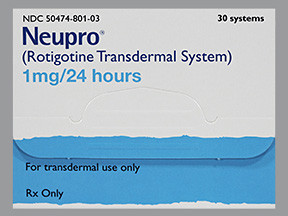
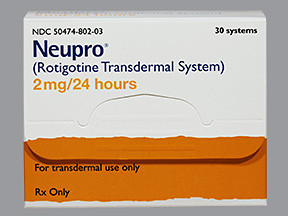
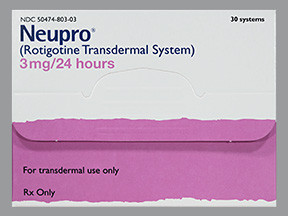
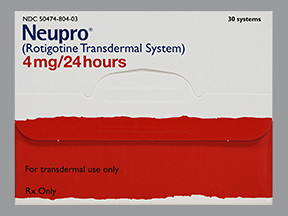
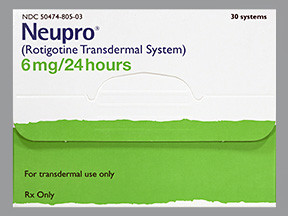
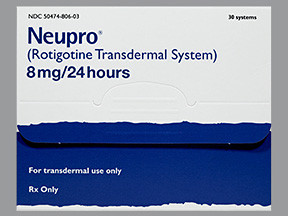
No Reviews Yet